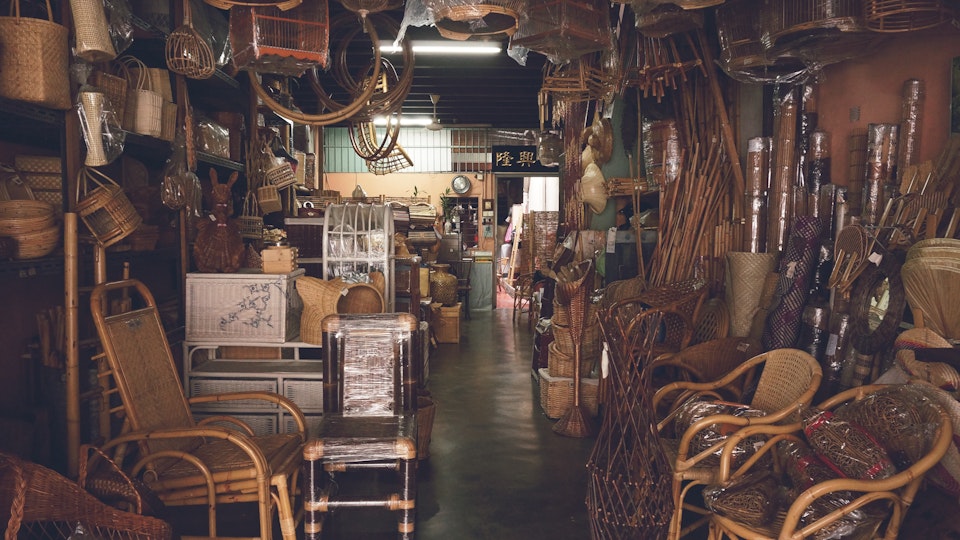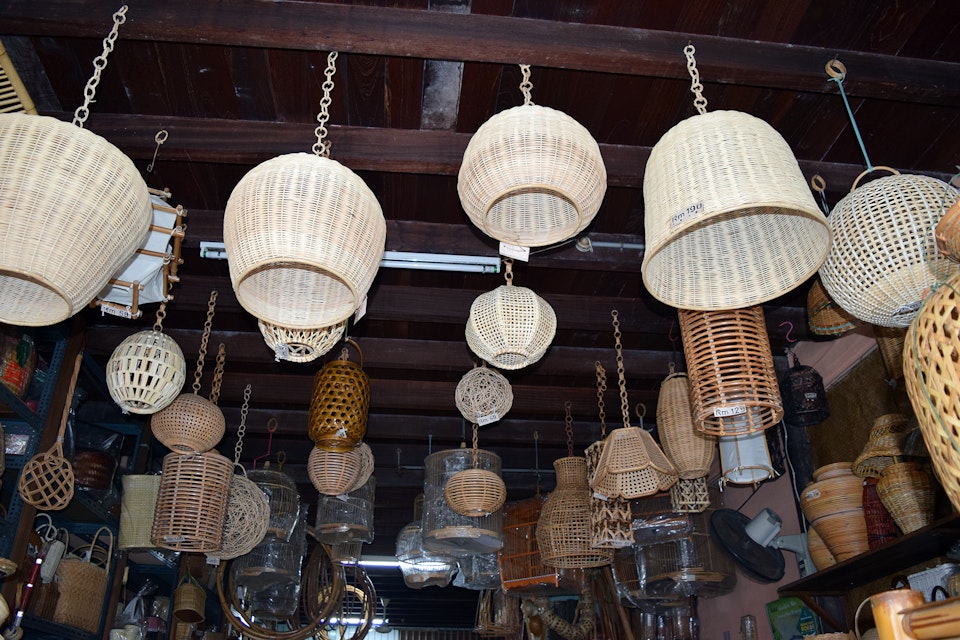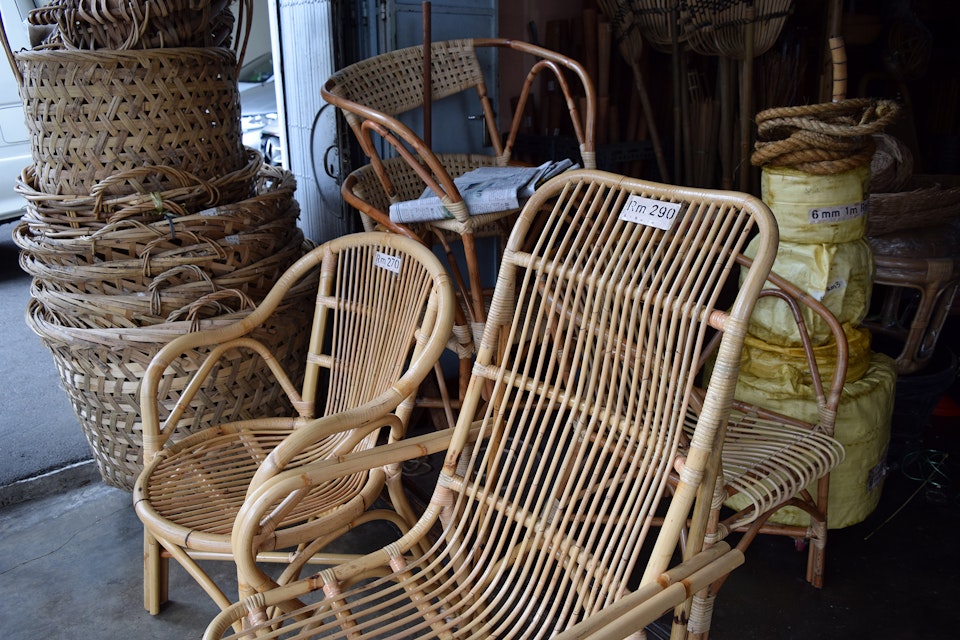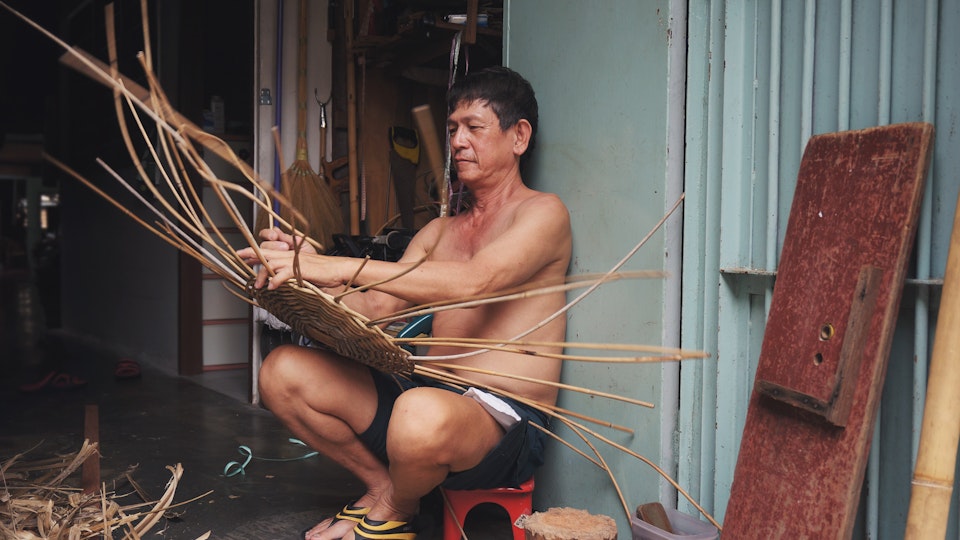April 02, 2017
Sim: A Rattan Legacy
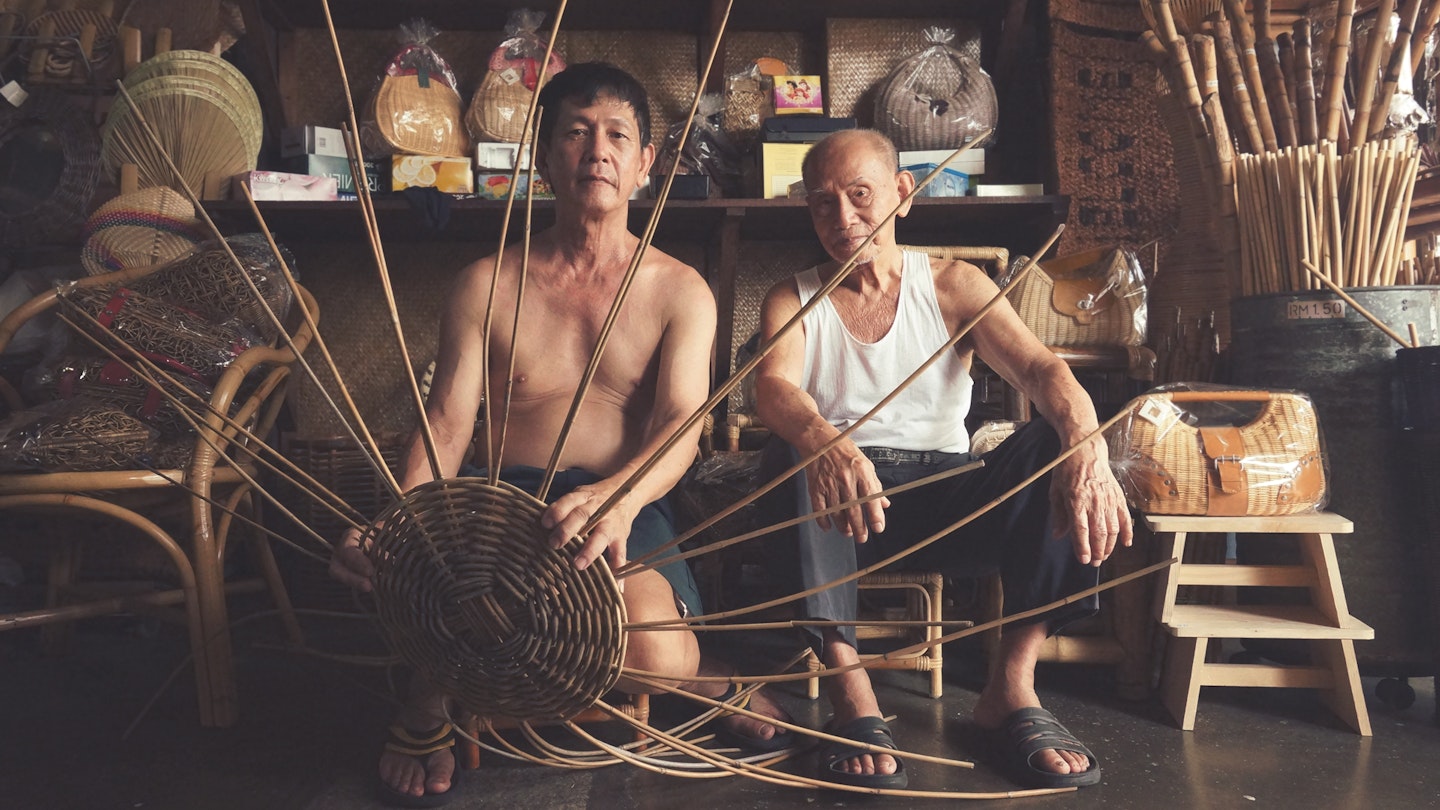
Atop the shop’s entrance, the Chinese characters of Seang Hin Leong are written in bold red. Rattan creations hung from the ceiling, greeting me from above. The shop had been in the same spot for three generations. “My grandfather had come from China and was living in Penang. He wanted my mother and father to help him out. So, we came and here we are now.” Sim has made Malaysia his home for over sixty years. He originally came from a place called Poh Leng in China and he is of Teochew descent.
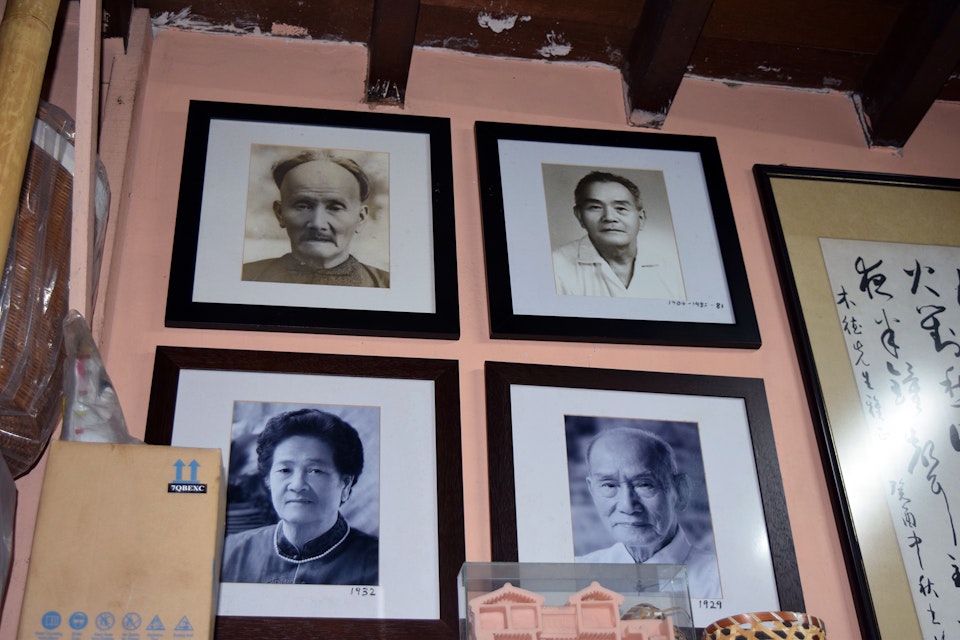
Sim's mother and father Sim Buck Teik (bottom row). Courtesy of Ann Ravinther.
We visited Chew Poh at his shop to learn about the craft of rattan weaving. When we arrived, we found him in the kitchen, dipping small, rattan stools into a large pool of liquid. It was oil. “Rattan pieces, at first, are not smooth. There are little needles of rattan sticking out, that would be prickly to sit on. The oil smooths it out and keeps it long-lasting and usable. I’m not sure what the oil is called in Malay…but it’s called toh yu [in Mandarin]…normally people used this oil to start a fire for cooking in the olden days.”

Newspaper cuttings in studio. Courtesy of Ann Ravinther.
It started drizzling and we proceeded in. He washed his hands and then showed me a wall filled with pictures of family members in wooden frames. There were also newspaper cuttings that acknowledge their family’s craft of rattan-making and highlighted their handiwork. We sat in front of the shop with the road in clear view. We listened to the street chatter outside as Chew Poh’s father sat on the floor, arranging rattan canes. The long, thin sticks are reminiscent of the ones my grandmother would buy when I was little. I figured that the ‘Spare the rod, spoil the child’ philosophy had gone out of style, but the disciplinarian nature of traditional families is still prevalent. Looking at the rattan chairs around me, I thought about how central they were to an Asian family, specifically a Chinese one.
Rattan is really about that – family. With Chew Poh, this remains true, as well.
Shop and studio. Courtesy of Sim.
Do you find rattan to be a difficult craft?
Everything is hard, actually. But, it’s not that much – it is really just about using your brain. You’ve got to look and see how to do it. It is about working with your hands, not a machine. If you want to do all this by yourself, it's a lot of work. If you do it little by little, you can do it.
You use both bamboo and rattan to make your pieces – what are the differences?
With rattan you can bend and it will not break. Bamboo will break if you bend it. That’s what makes it a bit hard. If you look at pieces made out of bamboo, they’re not bent at all – only rattan. It’s hard to make anything round with bamboo so the pieces made out of it tend to be straight and upright.
Rattan products made by Sim. Courtesy of Ann Ravinther.
How long can rattan and bamboo last?
With rattan, it’s not certain but I would say 2 to 3 years. Provided you take care of it properly. Bamboo lasts longer if it doesn’t get damaged by small worms. Around 10 to 20 years, I would say.
That’s quite a big difference. How long does it take to make a rattan chair?
You can’t really count how long it takes to make a chair. Because, if I were to make the legs, I’d make just legs for 15 chairs and that would take me 1 to 2 days.
Bamboo chairs made by Sim. Courtesy of Ann Ravinther.
So, you’ve got to do it piece by piece?
Yes, you do the pieces one at a time as you can’t make a single chair instantly in one day. That’s just not possible. Once I’m done with the legs, normally in the following day, I would do the back – so that’s 15 backs. It’s easier to cut one piece at a time. Chairs take a long time to make.
What about a simple container?
That doesn’t take as long. It normally takes about one day to finish.
How long did it take you to master the art?
At 16, I was already studying the art. I think it took me about 5 to 6 years to truly master it.
Mastering the Malaysian art of rattan weaving. Courtesy of Sim.
Lastly - is family one of the main reasons why you’re making rattan crafts?
This shop that we’re in belongs to my grandfather. Those days my grandfather did it and then my father, as well. I tried reading but I couldn’t. I wasn’t very good at school so naturally I followed and studied the art.
This art of rattan-making that Chew Poh carried on is one of heritage and legacy. His grandfather started it and as Chew Poh told me, it was his way of getting food. His hands just had a knack for it and that’s why his grandfather did it. They just knew how to do it. It was almost like it was in their blood. Chew Poh mentions that even his mother knows how to it. Rattan-making is a craft that can be closely tied to family. For Chew Poh, it is not just an art – it is his way of life and his livelihood.
Written by Ann Ravinther
Vacation with Sim in Penang, Malaysia
For more stories and new artist updates, subscribe here.
